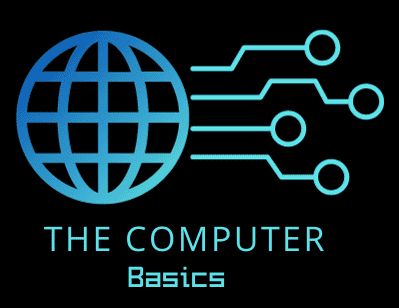TL;DR:
- Wi-Fi is a wireless internet connection that enables devices to go online, through a router sending out radio signals.
- Routers, modems, and potentially Ethernet cables are essential equipment for a home Wi-Fi setup.
- To enhance Wi-Fi coverage, positioning your router centrally can help, as can using Wi-Fi extenders or a mesh network system.
- Secure your network with a unique password, and high-grade encryption (like WPA3), and regularly update your firmware. Using a VPN can also provide an added layer of security.
- Common issues for a Wi-Fi network include slow connections or failing to connect, often remedied by troubleshooting steps like rebooting the router or being within its range.
- Connecting multiple devices, including smart devices, requires accessing their Wi-Fi settings to connect, with the password.
- Choosing the best Wi-Fi plan depends on your usage, the number of devices connected, coverage area, and quality of customer service.
Ever questioned the reliability of your wireless internet connection? You’re not alone. With an abundance of jargon and complex setup processes, understanding Wi-Fi can be a challenge. But don’t sweat it, we’re here to simplify all things Wi-Fi from basics, setup to troubleshooting. Whether you’re a tech pro or a novice, buckle up, and let’s unlock the mysteries of a seamless wireless internet connection together. So, are you ready to be a Wi-Fi whiz? Let’s get started!
What are the fundamentals of a wireless internet connection?
Simply put, a wireless internet connection, often known as Wi-Fi, lets devices like phones, tablets, and computers go online. This work is done via a wireless router sending out radio signals. Once these signals reach your device, you’re online!
But let’s delve deeper! Many ask, “What does Wi-Fi stand for?” You might be surprised to learn, it doesn’t stand for anything! It’s just a catchy phrase a marketing firm made up.
Now let’s chat about wireless internet setups. There are various kinds, each with its perks. With home Wi-Fi, a router brings internet to your home. This has limits, though. More devices mean less speed. Then there’s mobile hotspots and jetpacks. These are handy for on-the-go browsing. Jetpacks have a wider signal and can connect more devices. But, they cost extra and need a separate data plan.
4G LTE Home Internet and 5G Home Internet are other options. The first offers 25 Mbps download speeds and is a good pick for rural parts with few net options. 5G is super-fast, can handle many devices, and is ideal for urban areas. It’s clean, too, with no messy wires.
Sometimes, through all this fun wireless internet navigation, you may find your Wi-Fi weak or absent in some parts of your home. Wi-Fi extenders can help. They boost the signal to ensure every corner is covered.
And then there’s the demand. As you add more and more devices, your plan might need to keep up. Have a look at what your provider offers. If you’re a Verizon customer, check out their DSL, fiber, and 5G Home Internet options.
So, whether you’re a Wi-Fi beginner or a savvy user, understanding these fundamental elements can help enhance your online experience. Happy browsing!
How do you establish a wireless network at your home?
Setting up a home Wi-Fi network is not as hard as it may seem. It requires specific equipment and a simple series of actions. You need a modem, which connects to your internet service provider (ISP), and a wireless router to distribute the internet signal throughout your home.
What equipment is necessary for setting up home Wi-Fi?
The central device is the wireless router. It communicates directly with your modem and emits a Wi-Fi signal that your devices connect to. There are combo units, known as gateway routers, that combine a router and a modem in one package. You may also need Ethernet cables.
How do you position and secure the router?
Place your wireless router in a central location for the best coverage. Avoid areas next to metal objects and appliances that emit electromagnetic waves. Secure your router by setting up a unique password to help protect your network. You can manage these settings in your router’s software.
What are the steps for connecting a PC to your home Wi-Fi?
To connect a PC to your Wi-Fi, you need to open your PC’s network menu, find your Wi-Fi name, click on it, and enter the network password. Remember to connect to a secure network to protect your data. Also, keeping your software updated can ensure your home network maintains high security.

How can you improve your Wi-Fi connectivity and speed?
Ready to gain a rocket speed Wi-Fi? Follow me.
What are the ways to get a stronger Wi-Fi signal?
Your first step to a speedier Wi-Fi involves troubleshooting your Wi-Fi connections. Such tasks could involve rebooting your router or clearing your cache. Remember, even simple actions like these can make a difference.
How do router positioning and settings influence Wi-Fi strength?
How about the positioning of your router? Did you know, the luminary central spot can optimize your home Wi-Fi? Walls, floors, and even thick glass could curb your Wi-Fi vigor.
What are Wi-Fi technology advancements that can bolster speed?
A brighter future awaits us. The tech world never ceases to evolve. Today, we have promising innovations that aim to speed up the internet. Keep your eyes open for updates that can give you faster downloads and seamless video chats.
There you have it—a roadmap to a stronger, swifter Wi-Fi world!
How to Identify and Mitigate Common Wi-Fi Connection Issues?
Ever struggled to watch your favorite show because your Wi-Fi failed? You’re not alone. Wi-Fi issues can be quite the buzzkill and are often more common than you think.
What are Common Problems Faced When Setting up a Wi-Fi Network?
Setting up a Wi-Fi network can have its hitches. You may encounter installation difficulties. Your network might run slow, or worse, fail to connect at all. Sometimes, the range doesn’t satisfy, leading to dead zones and slow zones.
How to Troubleshoot Wi-Fi Connectivity Issues?
When your Wi-Fi stumbles, take a deep breath. First, check your hardware. Is your modem on? Are cables properly plugged in? Next, ensure you’re in your Wi-Fi range. If problems persist, try resetting your router.
What are Some Quick Fixes for Spotty Wi-Fi?
For a quick band-aid, try moving closer to the router or limit the number of devices connected to your network. Buying a Wi-Fi extender helps bridge dead zones. Always remember, that a little patience goes a long way with Wi-Fi troubleshooting.
There you go, a little insight into Wi-Fi glitches and quick remedies. Good luck on your digital journey!

How Secure is Your Home Wi-Fi Network?
When it comes to home Wi-Fi, it’s vital to note the risks involved. Unsecured Wi-Fi invites unwanted access. Hackers can tap into your network, peeking into your files and data. So, how safe is your home internet?
What Are the Risks Associated with Unsecured Wi-Fi Networks?
A breach in your wireless network exposes confidential data, making it important to secure your Wi-Fi. Intruders can track your web activity, grab your passwords, and steal sensitive data if you’re not cautious.
How Can You Enhance the Security of Your Home Wi-Fi Network?
Boost your Wi-Fi’s defense with high-grade encryption. Begin by setting up WPA3, the latest and most robust Wi-Fi security protocol. Additionally, keep your firmware up-to-date. Remember old routers can’t support WPA3. Consider upgrading to a current model.
Why Should You Consider Using a VPN on Your Home Wi-Fi?
A VPN should be a part of your home internet safety toolkit. It acts as a secure tunnel, deflecting prying eyes from picking out your online moves. Even if your Wi-Fi is breached, a VPN keeps your website visits private – further securing your wireless network.
How to Extend the Range of Your Wi-Fi Network?
What Causes Wi-Fi Dead Zones and How to Address Them?
Wi-Fi dead zones stem from blockages, distance, and interference. Thick walls, large furniture, or even appliances might block your Wi-Fi signal, causing dead zones. The easiest way to address this is to move your router. Put it in a central, high place free from obstructions.
How Do Wi-Fi Extenders Work and How to Set Them Up?
There are times when moving the router isn’t enough. For these cases, a Wi-Fi extender is handy. These gadgets capture and repeat the signal to extend its reach. To set up a Wi-Fi extender, link it to your network, then place it halfway between your router and the dead zone. Repeat the process until you have WiFi coverage everywhere in your home.
What Is a Mesh Network and How Can It Improve Wi-Fi Coverage?
If you have many dead zones or a large home, consider a mesh network system. Mesh networks are a group of routers working together to provide network coverage across a large area. The setup is simple: You place the central hub near your Internet source, then you place the smaller nodes around your space. They communicate with each other to amplify your Wi-Fi signal.
Remember: whatever solution you opt for, always test your Internet speed after setup. Changes made to your wireless network should result in clear, fast connections across your entire space!
How to connect different devices to your Wi-Fi?
Want to connect all your gadgets to Wi-Fi? Let’s dive in!

How can you connect multiple devices to a Wi-Fi network?
Connecting devices to your Wi-Fi is a breeze. Have your Wi-Fi password at hand. Access the device’s Wi-Fi settings and find your network. Enter your password. Voila! You’re connected.
Now, connecting multiple devices works the same way. Remember that each connected device divides the bandwidth. Internet feel sluggish? This might be the reason. Upgrade your plan if needed.
How to connect smart devices to Wi-Fi?
Smart devices, such as Alexa or Google Home, need Wi-Fi. To connect, download the device app first. Then, access the Wi-Fi settings in the app. Choose your network and enter your password.
Already set up? Use is the same for all! Speak your commands, and relax.
How to set up Wi-Fi calling?
Stuck without a signal? Wi-Fi calling steps in to save the day. To set up, go to your phone’s call settings. Look for “Wi-Fi calling” and switch it on. Now phone calls can use Wi-Fi when the cell signal is weak.
Enjoy your Wi-Fi-supercharged home!
Remember, check your devices and update any outdated software. Happy surfing!
How to choose the best Wi-Fi plan for your home?
Selecting the right Wi-Fi plan for your home requires careful thinking. The first step involves choosing the best Wi-Fi router for home use. Key factors include the number of devices it can support and its coverage area.
Now, let’s imagine you’re comparing various wireless internet packages. You need to assess based not only on price but also on aspects like speed, data limit, and customer service quality.
What about choosing the most suitable Wi-Fi plan for your home? This decision heavily relies on your usage. For instance, if you’re a family of binge-watchers or gamers, unlimited home internet options would be ideal. Alternatively, if your web activities involve light browsing and emails, lower-tier wifi plans for home usage should work fine.
Remember, in the end, a reliable internet connection isn’t just about the best plan or router – it’s about what fits your needs and offers you consistent service.
Conclusion
We’ve explored the nuts and bolts of a wireless internet connection, and how to set it up at home and boost its speed and reach. Alongside this, we’ve learned how to combat common Wi-Fi issues, fortify its security, and connect multiple devices. Lastly, we’ve emphasized the importance of choosing the right Wi-Fi plan.
All in all, mastering these aspects is key to enjoying an efficient, secure, and hassle-free digital experience. Now, dive in, get your hands dirty, and create your optimal Wi-Fi network!

